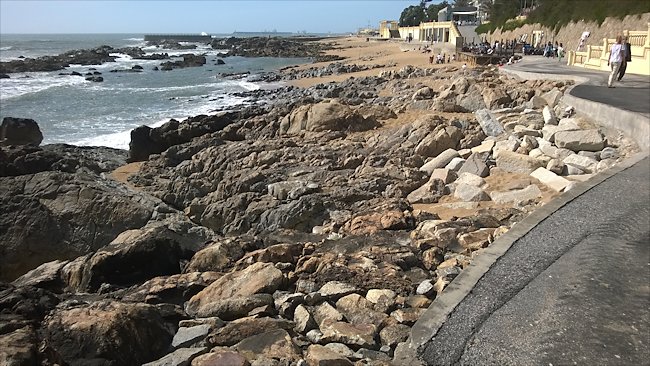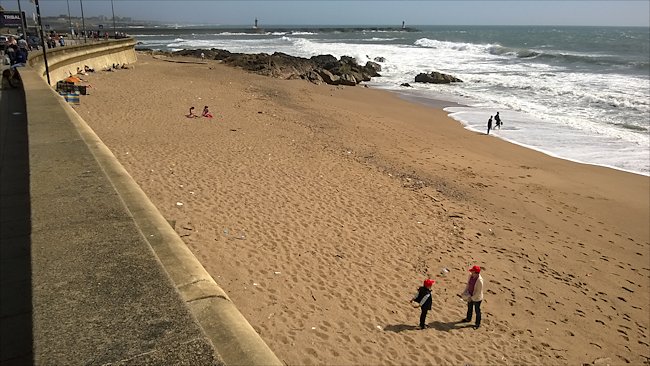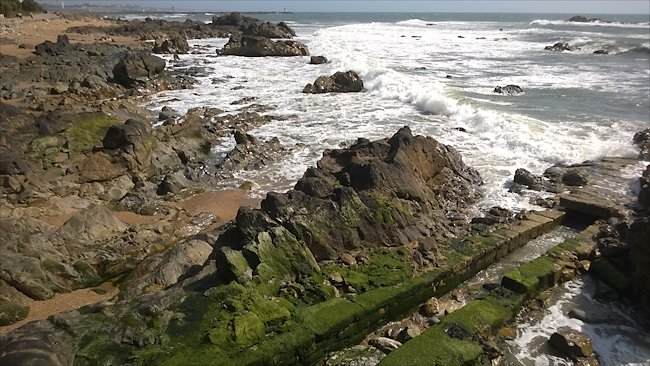Porto Beach
Many tourists who visit Porto for a weekend city break do not realise that the city has a 10 kilometre beach. It is easily reached by taking the old historic tram along the river Douro from the city centre to the end of the line at Fox do Douro on the Atlantic Ocean coast.

The many different geological rock types along Porto's Coast line means that it has rocky and sandy beaches.
You can spend all day exploring the different beaches, cafes and restaurants as you walk north towards the modern port of Matosinhos. At any stage that you get tired all you have to do is catch one of the many buses that run along the coast road, back to the centre of Porto. There are also three old castles to find and explore, that used to protect the coastal run into the harbour in Porto.
As you walk up the coast you are stepping back in time because every five hundred metres the rock structure under your feet changes. This has a dramatic effect on what the coastline looks like. In areas of soft sandstone you will find long sandy beaches.
The sandstone layers are interrupted by harder metamorphic and volcanic rock which is more resistant to weathering and battering by the storms of the Atlantic Ocean. These sections produce the rocky outcrops and at low tide rock pools the children young and old to explore.

This sandy beach was made from eroded soft sandstone that was formed when this area of Portugal used to be a desert millions of years ago.
To get an idea of what happened imagine a giant sandwich with fourteen different layers. (Each of these layers represents a 100 to 50 million year time period and a different type of rock.) Cut the sandwich with a sharp knife and now lay it on its side. This is what the rock structure looks like as you walk up the coast.
The youngest rock is only twenty-three million years old and was laid down during the Neogene Period. There are rocks from the Mesozoic Era when dinosaurs ruled the world during the Cretaceous, Jurassic and Triassic periods between sixty-six and two hundred fifty-one million years ago.
Most of the very hard rocks come from the older Paleozoic Era including Carboniferous, Devonian, Silurian, Ordovician and Cambrian periods. Many of these sedimentary rocks have been metamorphosed by extreme pressures and heat. Others have veins of quartz running through them from now extinct volcanoes.

This stretch of the coast is rocky because it is comprises of metamorphic hard rock strata that resists erosion from the Atlantic Ocean waves.
If you have not studied geography and geology a lot of this sounds like gobbledygook. To help visitors understand how rock affects the type of beach features that are displayed along the coast, they have erected information noticeboards in Portuguese and English to make it easier to understand.
Travel books

